The Subaru Forester is one of America's most popular compact crossover SUVs partly because of its all-wheel-drive (AWD) feature. However, there may be instances during winter when even AWD and all-weather tires are not enough. During these times, can you use tire chains on a Forester? We've compiled our research for your reading pleasure.
Based on the Forester owner's manual, you cannot use tire chains due to insufficient clearance between the tires and the vehicle's body. However, the same manual says that you can use alternative traction devices as long as they conform to SAE class S requirements.
Therefore, if you have SAE class S tire chains or cable chains, you can use them on the Subaru Forester. You may also consider using tire socks as an alternative.
If you are keen to know more about the traction devices you can use for the Subaru Forester, then you're in the right place. Do read on and we will do our best to help you understand this matter.
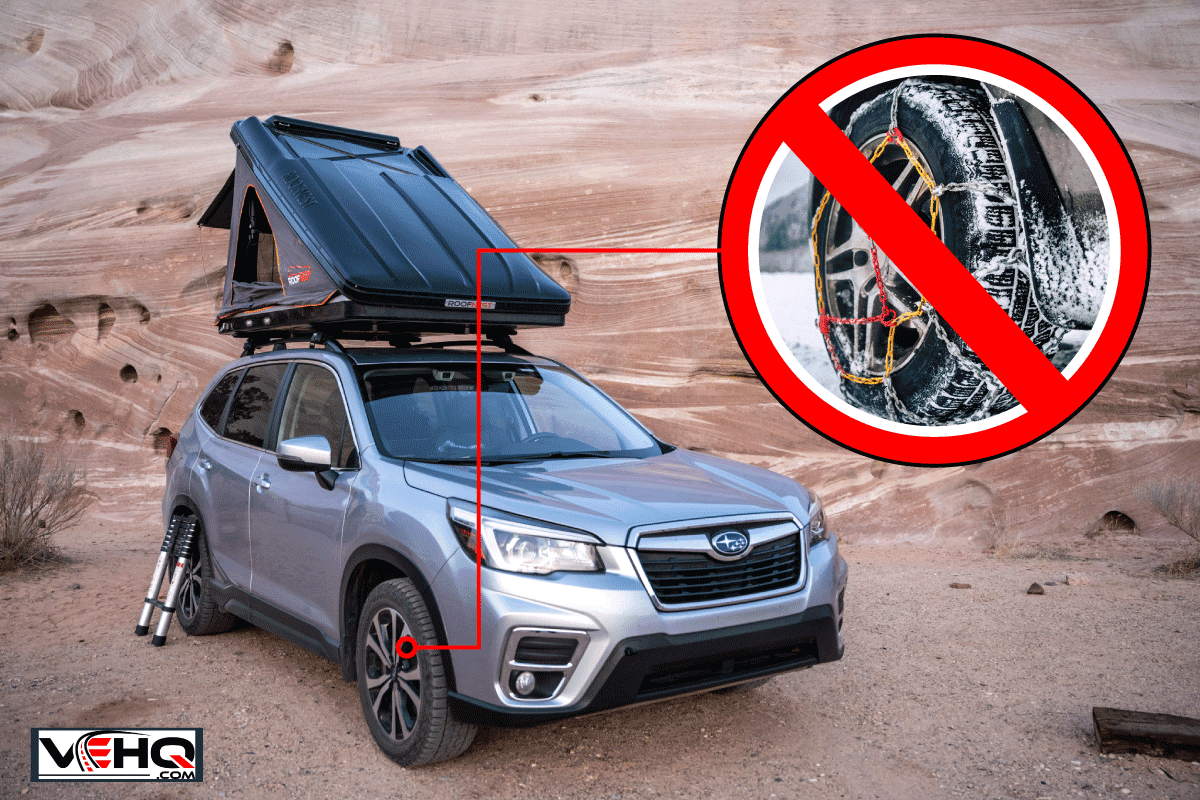
Is It OK To Put Chains On A Subaru Forester?
According to the 2022 Subaru Forester owner's manual, the Forester cannot use tire chains due to insufficient clearance between the vehicle's tires and its body.
Moreover, the manual goes on to say that the Forester can use other types of traction devices such as spring chains. However, the manual also states very specific qualifiers before using such alternative traction devices, and they are as follows.
- The alternative traction device is recommended for the Forester by the device manufacturer.
- The owner will use the device on appropriately-sized tires not larger than the Forester's original tires.
- The owner will use the device only when road conditions make them necessary.
- Forester drivers must follow the device manufacturer's instructions, particularly on maximum vehicle speed.
- The Forester's warranty does not cover damage to the vehicle due to using a traction device.
- Only SAE class S traction devices should be used for the Forester.
- Forester owners should use the class S traction devices only on the front wheels.
Our key takeaway here is that the Forester can use SAE class S traction devices. What are these devices, and how are they different from standard tire chains often used by larger vehicles such as trucks and full-size SUVs?
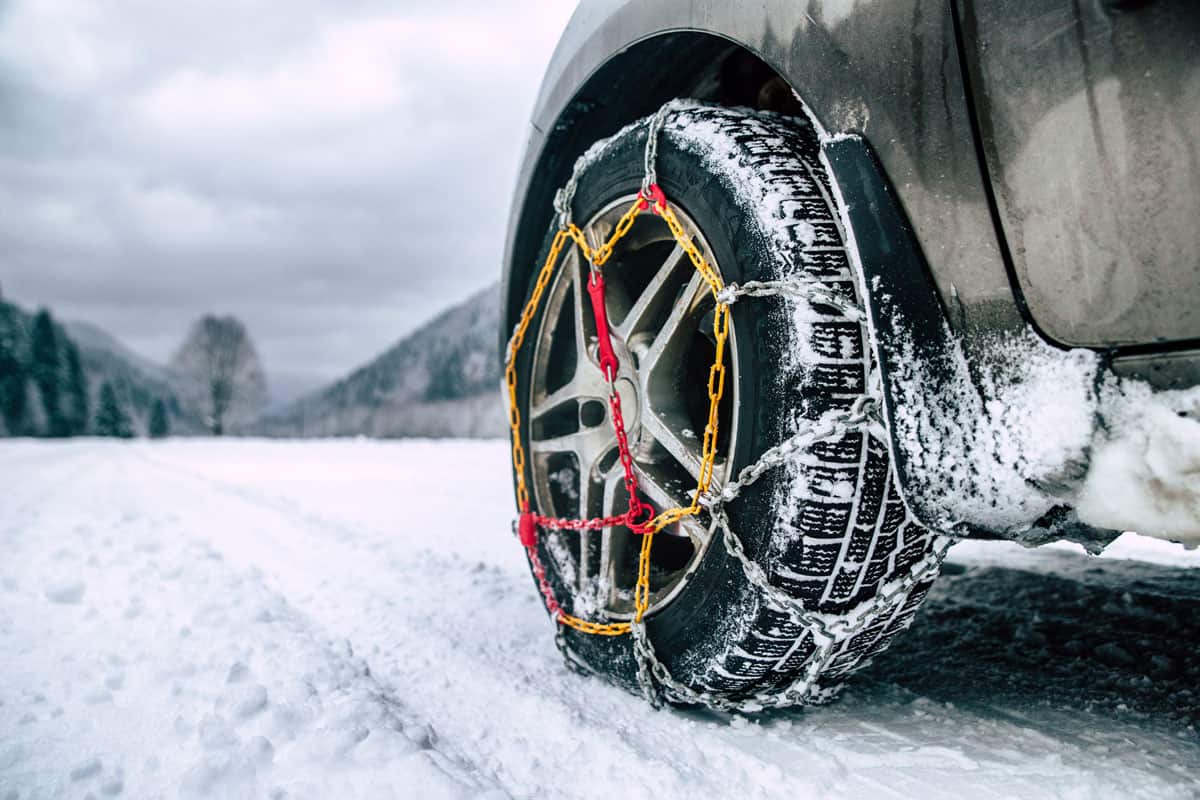
What Are Tire Chains?
Tire chains are devices that you secure to your tires to help your vehicle achieve maximum traction on slippery surfaces like ice, snow, and mud. These chains are particularly useful when driving in frigid, snowy regions or in muddy off-road terrain.
There are different types and sizes of tire chains.
- Diagonal chains pair well with vehicles equipped with the traction control feature.
- Diamond-pattern chains produce more consistent road grip and better ride quality than diagonal chains.
- Spring chains, also called cable chains, give even better ride quality, especially for vehicles with limited tire clearance.
Why Do I Need Tire Chains?
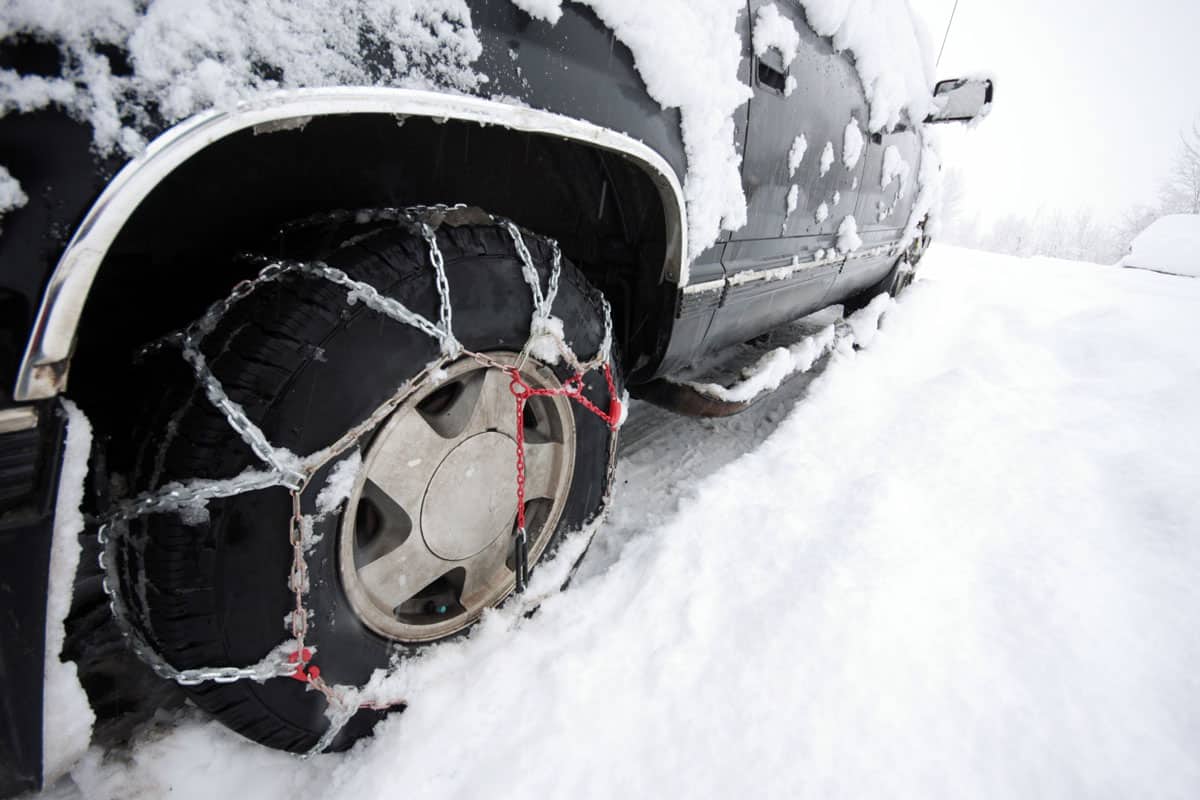
Driving on snowy or icy roads can be extremely dangerous. Even with a powerful engine and an AWD configuration, a vehicle can veer off the road if its tires have no traction. Tire chains are good temporary solutions for your vehicle if you absolutely need to drive during these situations.
Aside from logical reasons based on good driver prudence, there are some American states that have "chain laws." These laws require drivers to bring snow chains in their vehicles.
- California's Department of Transportation requires drivers to bring tire chains in their vehicles when there are snowstorms, especially in the mountains.
- Colorado requires tire chains in every state, federal, and interstate highway in the entire state.
- Montana requires tire chains in some specified areas, as indicated by road signs.
- Nevada requires tire chains for vehicles driving through northern Nevada mountain passes from mid-October to mid-June.
- Oregon requires tire chains during winter, especially in areas where the snow zone signs are posted.
- Washington requires all vehicles with gross weights over 10,000 pounds to carry tire chains. This gross weight usually includes commercial trucks and even some large SUVs.
- Wyoming has a two-tier chain law that uses the actual weather conditions when issuing case-to-case requirements for tire chains, AWD systems, snow tires, and other traction devices.
Of course, some states and countries with moderate or temperate climates prohibit the use of tire chains to prevent damage to the road.
What Are SAE Class S Traction Devices?
- Treadface clearance: 1.46 inches or 37 millimeters
- Sidewall clearance: 0.59 inches or 15 millimeters
Some examples of SAE Class S traction devices are cable chains and snow socks.
What Are Spring Chains?
What Are Snow Socks?
Snow socks, also called tire socks or auto socks, are fabric or textile-based traction devices that provide additional tire grip on slippery roads or surfaces. Because of their fabric composition, tire socks are usually much thinner and lighter than spring chains.
Although tire socks offer additional traction, they are not considered a legal equivalent of tire chains. Tire socks wear out more easily than tire chains and cables, especially on dry and rough surfaces.
Check out this popular set of tire socks on Amazon!
Nevertheless, tire socks can still help mitigate tire slipping on snowy or icy roads. Moreover, if they rip apart, tire socks cannot damage a vehicle's tires, brakes, or wheel well as much as tire chains or tire cables can.
What Kind Of Engine Does A Subaru Forester Have?
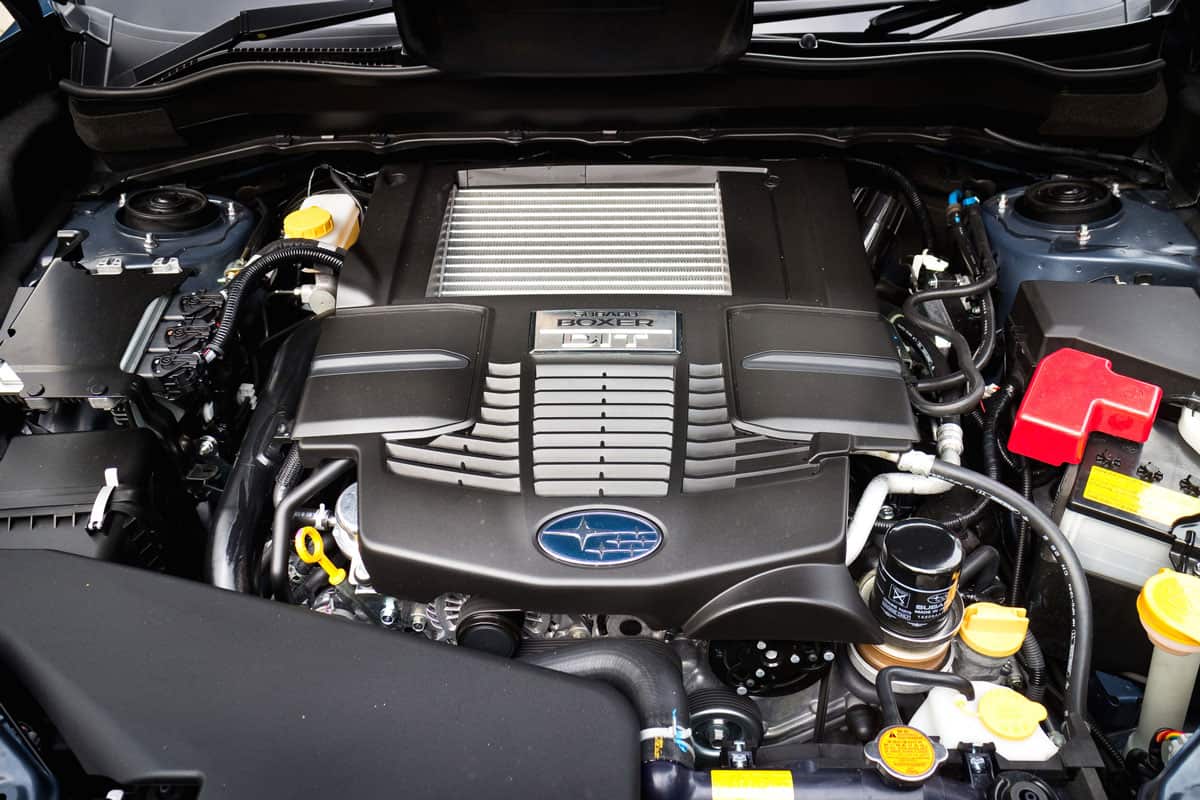
A potent 2.5-liter, 4-cylinder Subaru Boxer engine powers the current USA-spec Subaru Forester. This revered engine provides a decent 182 hp and 176 lb-ft of torque. It is also the same engine inside other Subaru nameplates such as the Outback, the Crosstrek, and the Legacy.
Like its brand stablemates, the Forester features Subaru's Lineartronic Continuously Variable Transmission (CVT). This Subaru-exclusive transmission system transfer's the Boxer engine's power to all four wheels, controlled by Subaru's Symmetrical All-Wheel-Drive (AWD) system.
Is The Subaru Forester Fuel-Efficient?
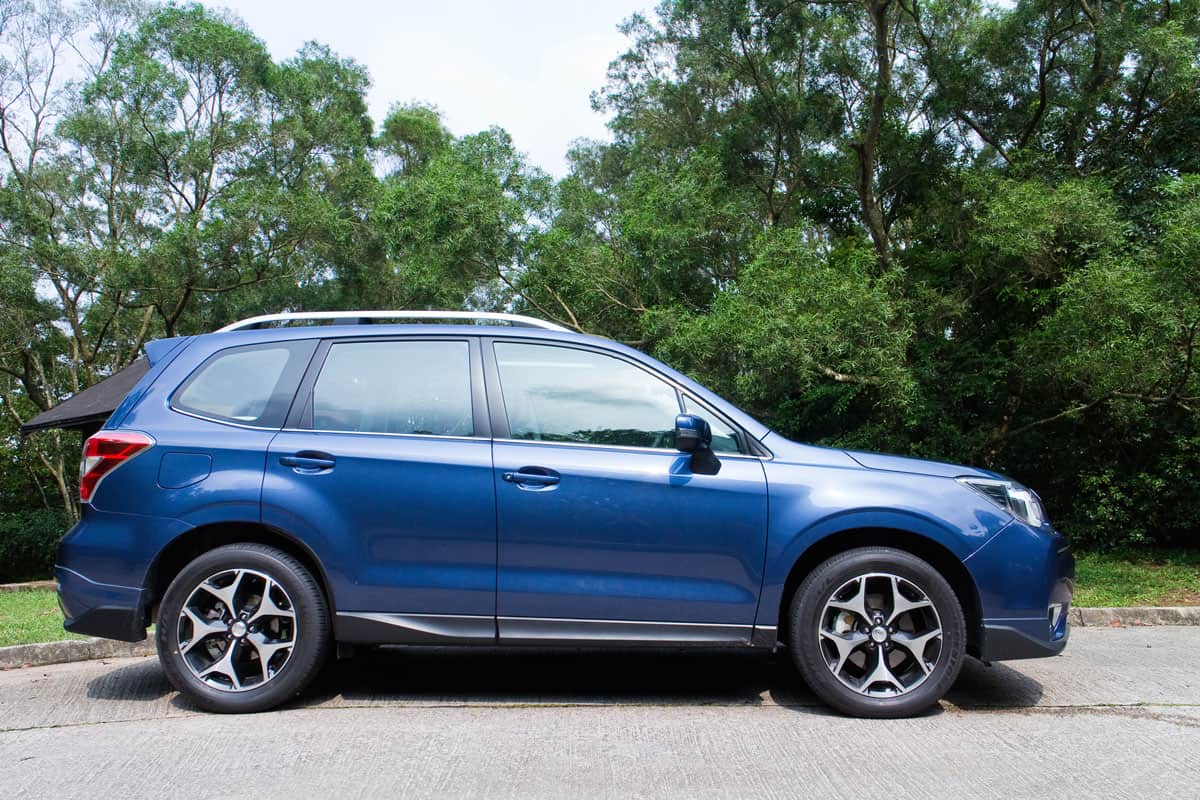
Based on the fuel economy ratings of the U.S. Environmental Protection Agency's (EPA), the 2022 Subaru Forester is among the most fuel-efficient AWD crossover SUVs on the market today.
The non-Wilderness Forester trims achieved 33 mpg on the highway and 26 miles per gallon (mpg) in the city. These figures gave the said variants a combined city/highway rating of 29 mpg.
Despite its off-road features, the Wilderness trim still chalked up 28 mpg on the highway and 25 mpg in the city. The Wilderness model also has a respectable combined fuel economy rating of 26 mpg.
Why Is The Subaru Forester Popular?
The Forester is one of America's most popular compact crossover SUVs. In fact, for the greater part of the past decade, the Forester has been a consistent best-seller. This Subaru model usually takes 7th or 8th place in its category based on unit sales.
Based on a popular consumer-based review, the 2022 Subaru Forester has a roomy interior, plenty of safety features, and great fuel economy.
On another note, based on J.D. Power's review, the 2022 Forester also shines in terms of resale value, quality, and reliability.
As proof of this crossover model's quality and reliability, 97% of the Foresters sold in the past 10 years are still plying America's roads today. Furthermore, the Forester has retained its market value better than all others in its class for the past seven years.
How Much Is The Subaru Forester?
As of May 2022, the starting prices of the different Forester variants are as follows.
- Forester (base)- $25,895
- Premium - $28,895
- Sport - $30,465
- Limited - $32,575
- Wilderness - $33,520
- Touring - $35,995
Wrapping Up
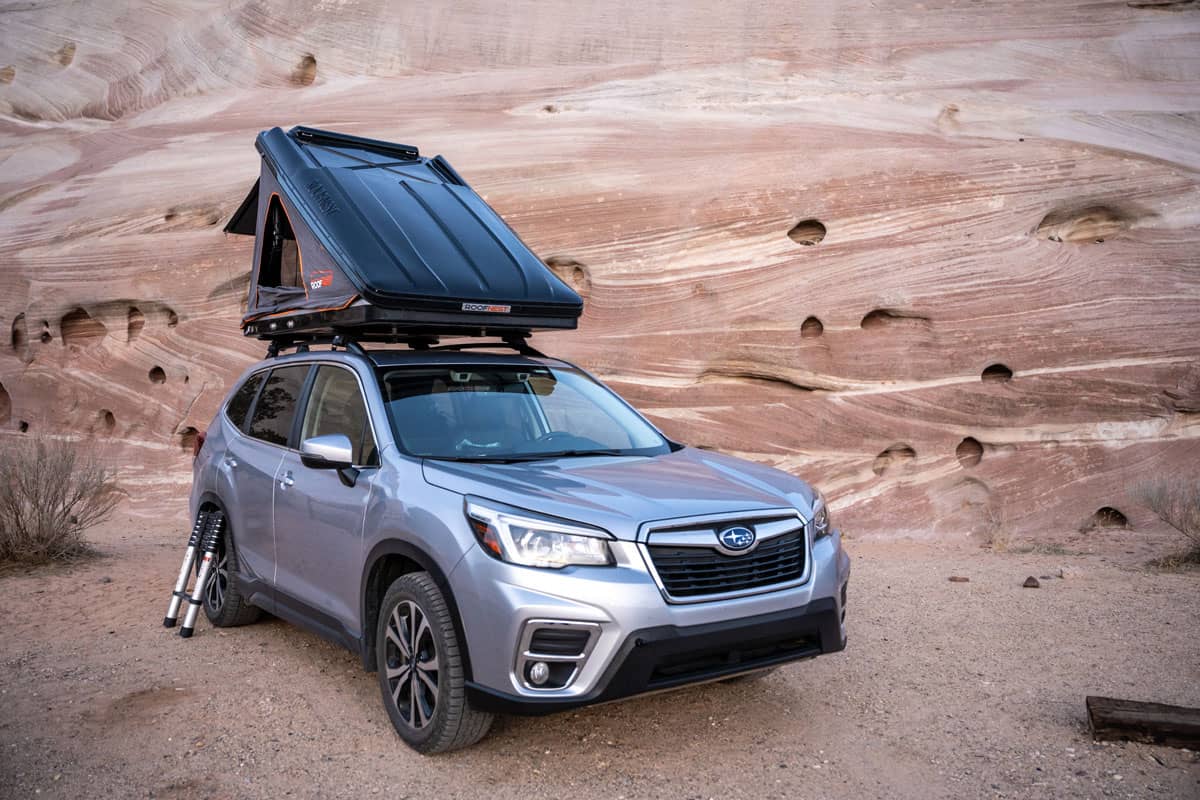
The Subaru Forester cannot use standard tire chains due to the limited clearance between the vehicle's tires and body. However, the Forester can use SAE Class S traction devices should the need arise during inclement weather and dangerous road conditions.
If you plan to use any type of traction device on your Forester, always remember to follow your owner's manual to avoid damage and accidents.
Thank you very much for reading. We hope that we were able to help you understand more about the usage of traction devices on the Subaru Forester.
For more interesting reads about the Subaru Forester and other automotive topics, check out these great articles:



Thank you for this article. It was exactly what I needed – informative, objective and well written.